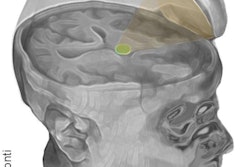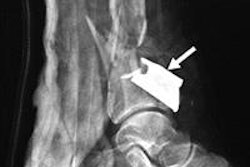Low-intensity pulsed ultrasound (LIPUS) treatment after surgical repair of a fractured tibia is ineffective, and it's time to discontinue this procedure, according to a study and linked editorial published online Wednesday in BMJ.
Researchers found that ultrasound after surgery for a fractured tibia did not speed up healing time or improve functional recovery compared with a sham treatment. The randomized controlled trial involved more than 500 patients and a multi-institutional and multinational research team led by Jason Busse of McMaster University in Hamilton, Canada.
A common long bone fracture, tibial fractures heal slowly and often need further surgery to stimulate or accelerate the healing process. These complications are debilitating for patients as well as expensive for health systems, according to a release from BMJ.
In 1994, the U.S. Food and Drug Administration approved LIPUS for fracture healing, and it's now widely used for this application in North America, according to the researchers. However, previous trials investigating the treatment's effectiveness have produced different results.
In an attempt to resolve this uncertainty, the researchers enrolled 501 adults who underwent surgery for a tibial fracture at 43 North American academic trauma centers between October 2008 and September 2012. Patients received either LIPUS or a sham ultrasound procedure.
Busse and colleagues found no difference between the two groups for any outcome.
"Addition of LIPUS to usual care for patients with fracture failed to accelerate radiographic healing or improve function," the authors concluded.
In a linked editorial also published on Wednesday, Dr. Xavier Griffin, an associate professor of trauma surgery at the University of Oxford in Oxford, U.K., said there is now sound evidence that the treatment doesn't work and should no longer be used.
"These authors report important patient-centered outcomes with a precise estimate, showing that low-intensity pulsed ultrasound is of no benefit to adults with tibial fractures treated with an intramedullary nail," Griffin wrote. "It is time for us to make good use of their determination and abandon this ineffective treatment."



















